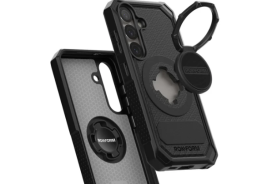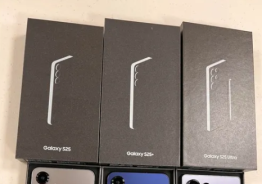Google's Motorola unit has launched its first Intel-powered smartphone, the Motorola Razr i. The smartphone is based in the mid-range Motorola Razr M sold in the U.S., which features an ARM-based Snapdragon processor.
According to the company, the change of chip brings improved camera performance. On the other hand, the Intel chip also means Google's Chrome browser is not installed on the device, like it is on its U.S. counterpart.
"Chrome is not ready for pre-loading on this device," reckoned Jim Wicks, Motorola's senior vice president of consumer experience. "We don't want to do that unless we have complete chipset optimization at that level." Users will, however, be able to download the software from Google Play.
Like the U.S. Motorola Razr M, the Razr i handset features the same near edge-to-edge display, packing a 4.3-inch screen into an arguably compact design. The big differences, however, lay under the hood. The Razr i sports a single 2GHz Atom Z2480 "Medfield" chip, and it comes as the first Motorola phone to achieve those speeds.
According to Intel, the new chipset also includes a new image signal processor specifically optimized to work with Motorola's technology. The processor allows the camera to capture 10 shots in less than a second, and has a dedicated camera key as well. These features are not available in the U.S. Razr M.
"You can be ready to take a picture in less than one second, which is about twice as fast as other products on the market," Eric Reid, general manager of Intel mobile and communications group, told the BBC. "A lot of times you want to take multiple pictures - and you can take up to 10 pictures in a second, which is faster than many DSLRs (digital single lens reflex) cameras on the market today."
Motorola has also touted the battery life on its latest Droid phones, and the Razr i raises up to those standards. The phone lasts for up to 20 hours of "mixed use" time, Motorola's measure of a user's normal smartphone routine. Wicks also noted that the Razr i lasts a bit longer than its U.S. counterpart, the Razr M.
This claimed battery performance directly addresses the concern that Intel processors are not as power-efficient as Qualcomm's Snapdragon or Nvidia's Tegra processors, a concern that has marred Intel's efforts in the mobile arena.
Other features include an 8-megapixel camera, 2,000mAh battery, and the same Android 4.0 Ice Cream Sandwich as the Razr M. The smartphone also packs a penta band antenna, which means it can roam in the U.S. as well. It is also compatible with HSPA+ 14 networks run by T-Mobile and AT&T.
The Motorola Razr i marks the first device to result from a partnership announced back in January, at the Consumer Electronics Show (CES). The alliance between Intel and Motorola was widely seen as a stepping stone to help Intel establish a relevant presence into the smartphone market, as Motorola is now a unit of Google, and Google runs the great Android ecosystem. The Razr i will be available in Europe and Latin America.
Wicks also confirmed that Motorola plans to offer more Intel-based handsets over the coming years, but did not detail whether those handsets would be restricted to markets outside the United States. Meanwhile, Intel's Reid added that his company plans to announce further collaborations with manufacturers before the end of this year.
© Copyright 2026 Mobile & Apps, All rights reserved. Do not reproduce without permission.












